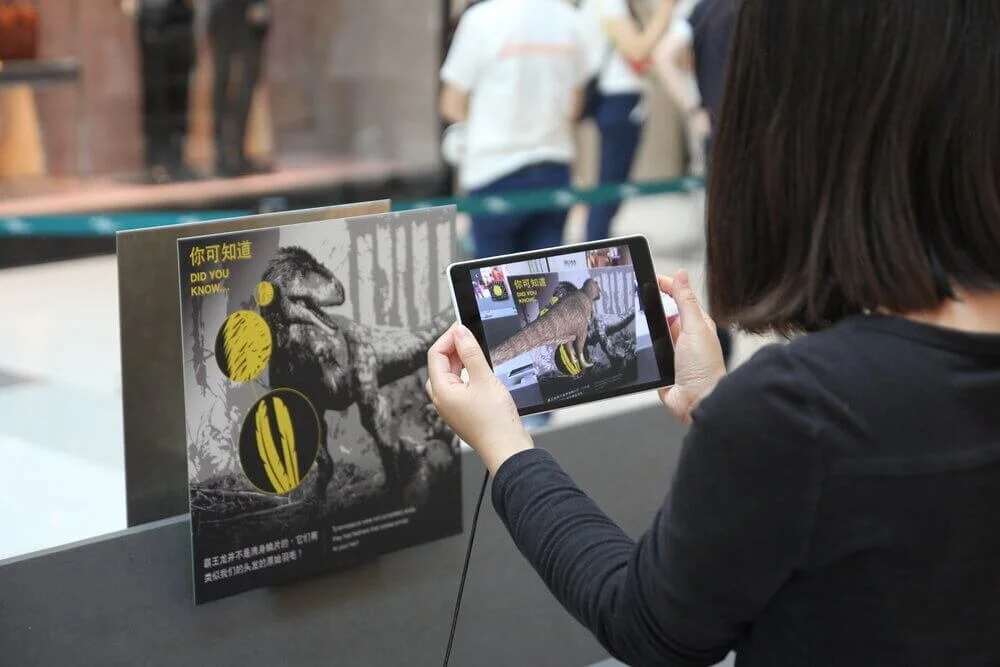Augmented Reality and Education
What would be your answer if someone asked you when you first experienced 'augmented reality’? You definitely shouldn't say you never did. If you’ve ever watched a live telecast of election vote counting, any sport that has the scorecard embedded on the screen, or some other similar exercise that displays the latest details in the corner of the screen, you have enjoyed some form of augmented reality.
Augmented reality is a technology that works by superimposing electronically-generated graphics, audio and other necessary sensory enhancements onto a user's view of the real world, thus providing a composite view in real time. The developments pertaining to this technology started when Ivan Sutherland developed the first head-mounted display system in 1968 and made some serious headway with the artificial reality laboratory named Videoplace built by Myron Krueger. But, the term 'augmented reality' was coined by the Boeing researcher Tom Caudell only in 1990. Since then, augmented reality has achieved rapid progress, along with other technological advancements.
By late 1990s, actors of the entertainment sector, such as the video game and casino industry. were among the first to adopt augmented reality technology at a large scale. Similar to how augmented reality has influenced the entertainment and other sectors where it has been adopted, it also has the capability of revolutionizing the education sector as well.
Augmented reality can make lectures more interesting and informative. If rules permit, teachers can incorporate augmented reality into their lectures by making use of any of the numerous augmented reality apps available. Using these apps, a teacher could scan an image or topic from the textbook and project the additional information onto a screen. This would effectively extend the horizon of teaching beyond the text book and make teaching more dynamic. Additional, but related, current news and information provided by the app could keep the students updated.
Augmented reality can make the teaching of theories simple and easier. A majority of educational institutions are constrained by a lack of resources necessary to demonstrate theories to students, resulting in raw and plain teaching without demonstrations. The ability of augmented reality technology to render 3D models will help students get the 'feel' of what is being taught and grasp the concept quickly. It will also help increase the retention of what is being taught.
Augmented reality can foster intellectual curiosity in students. With the help of augmented reality apps, books can be made more 'interactive' to provide students with supplemental facts and figures. The availability to have more information at their fingertips will continuously stimulate students to seek and gather more information. This, in turn, will help students analyse topics more critically and seek the right career.
Augmented reality can assist students in doing homework. Using tailor-made apps, students will be able to scan a task and access pre-recorded guidance information. The benefit is that students will be able to try completing their homework on their own, giving them a sense of satisfaction and an urge to learn more.
Augmented reality can help in the creation of interactive games that help students 'feel' and learn through real-life incidents. An example of this is the Community Science Investigators program being run in the Boston and St. Louis areas. Through this program, students design and play augmented reality games using geospatial technologies to explore issues in their community and then use that knowledge along with data they've collected to choose and implement a service learning project that impacts their community.
In toto, augmented reality looks like a very promising technology for the education sector, and it has already started revolutionising education wherever adopted. It leads to greater development of the students and the society.
When it comes to the importance of education in development, we should always remember the words of former American president Barack Obama: "The countries who out-educate us today will out-compete us tomorrow". Thus, countries seeking increased development need to adopt innovative ways of educating their citizens. With the current technological progress, augmented reality looks like the technology that can take education to the next level.

